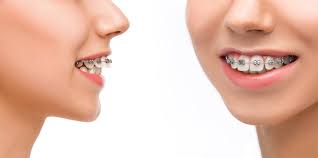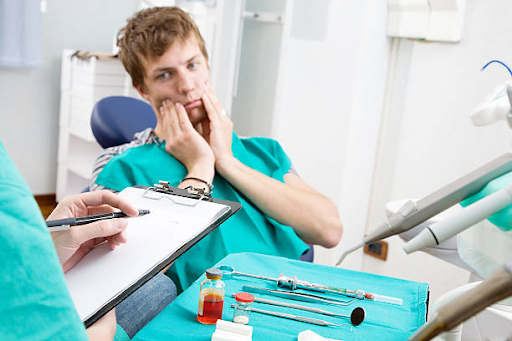Gum disease is a common condition that can affect anyone. It is a serious issue that can harm your gums and teeth. If you catch it early, you can stop it from getting worse. When you don’t catch it early, it can lead to a number of dental problems, some of which can be quite serious.
Your oral health isn’t just about your teeth. You need to take a holistic approach to keeping your teeth healthy and that includes your gums. In this article, we will give you a few red flags to watch out for so you don’t end up with a serious problem with your gums and teeth.
The 5 Gum Disease Red Flags to Watch Out for
1 – Red, swollen, or tender gums
When your gums are healthy, they should be firm and a pale pink color. If you notice that your gums are red, swollen, or feel tender when you touch them, it might be a sign of gum disease. These symptoms can show up when there is an infection or inflammation in the gums.
The cause is often plaque which is bacteria that builds up on your teeth. If you do not clean your teeth well, plaque can harm your gums. Sometimes, people might not notice these signs or think they are not a big deal.
If you see these signs in your mouth, it is a good idea to visit a dentist. A dental office like TexSmiles Dental can check your gums and help you find out if you have gum disease. They can also give you advice on how to take care of your gums and teeth to make them healthy again.
2 – Persistent bad breath
Bad breath that doesn’t go away is an embarrassing problem. However, it can also be a sign of gum disease. This happens when the bacteria in your mouth produce toxins, leading to an unpleasant odor. The bacteria thrive in places where there is a buildup of plaque and tartar, and they can irritate and infect your gums.
When your gums are affected, it can lead to a persistent bad taste in your mouth and bad breath that continues even after you brush your teeth. It’s important not to ignore this symptom, thinking it will just go away on its own. Good oral hygiene practices, including regular brushing and flossing, can help in preventing and managing this issue.
3 – Bleeding while brushing
Seeing blood when you brush or floss your teeth, or while eating hard food, can be a clear sign that something is not right with your gums. Healthy gums should not bleed easily. When they do, it’s usually a symptom of gum disease. The early stage of gum disease is called gingivitis, and it’s often marked by bleeding gums.
The good news is that gingivitis can usually be reversed with good oral hygiene practices. This includes brushing your teeth twice a day, flossing daily, and visiting your dentist regularly for cleanings and check-ups. Ignoring these signs and not taking action can lead to more severe forms of gum disease.
If you’re experiencing bleeding gums, it’s important to make an appointment with your dentist. They can give you a teeth cleaning to remove plaque and tartar and can also offer advice on the best way to take care of your teeth and gums at home to prevent future problems.
4 – Gums pulling away from teeth
Healthy gums are meant to protect your teeth and should fit snugly against them. However, one of the signs of gum disease is when the gums start to pull away or recede from the teeth.
This can create small pockets between the teeth and gums, providing a space where bacteria can build up. If not addressed, this can lead to more serious issues, including damage to the supporting structures of the teeth and eventual tooth loss.
Gum recession can happen gradually, so pay attention to your gums and see if you notice any changes. You may notice that your teeth look longer or that there is a noticeable line where the gum used to meet the tooth. Or, you could experience sensitivity to hot and cold food and beverages due to the exposed tooth root.
If you notice your gums are receding, it’s important to see a dentist as soon as possible. They can determine the cause of the gum recession and provide appropriate treatment to help prevent further damage.
5 – Loose teeth
One of the more serious signs that you might be dealing with gum disease is if your permanent teeth start to feel loose or you notice them separating. This can happen when the structures that hold your teeth in place become damaged. The damage is often caused by the buildup of plaque and tartar, which leads to infection and inflammation in the gums.
As gum disease gets worse, the bones in your jaw that hold your teeth in place can be weakened. If left untreated, this can lead to teeth that are so loose they may need to be removed. In some cases, you might also notice gaps developing between your teeth, or changes in the way your teeth fit together when you bite.
This is a clear sign that you should see a dentist as soon as possible. They can evaluate the situation and help determine the best course of action to prevent further damage. Treatment might involve deep cleaning below the gumline or, it can be some medication to clear up the damage and strengthen the bone.
Conclusion
We hope this article has helped you understand the importance of spotting the signs of gum disease early. If you see any of these signs then you need to take immediate action otherwise you could face more serious problems later on.
Taking care of your teeth starts with maintaining healthy gums. Be proactive in your oral health routine because when your gums are healthy so are your teeth and overall well-being.

